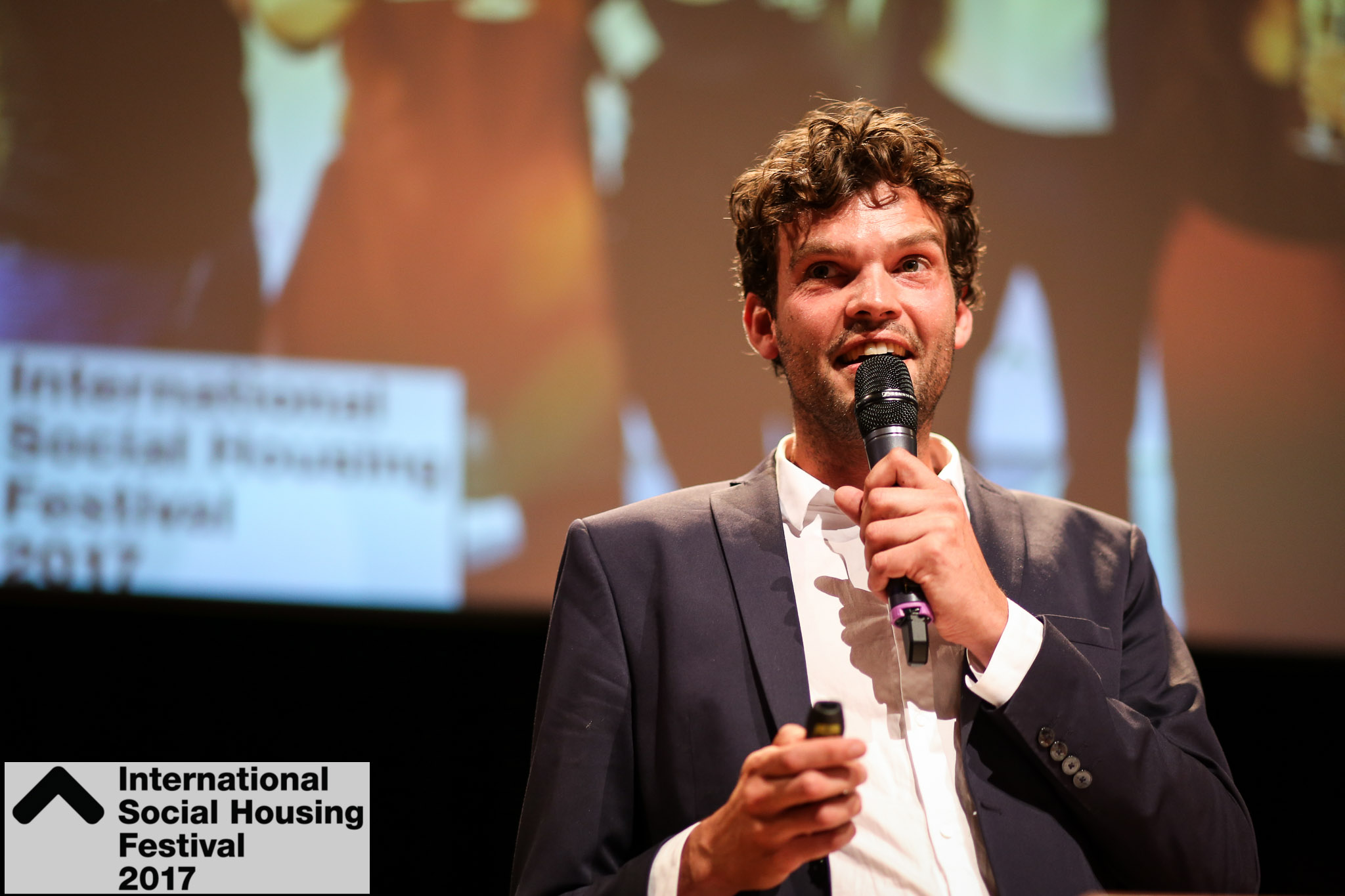
22 June 2017
Expand our movement!
We can look back on an incredible first edition of the International Social Housing Festival that has exceeded our expectations in many ways. It got bigger, better, stronger, more diverse, more international, more vivid, and more exciting than we could ever have conceived. I strongly believe this not solely because of my fantastic team, who is truly spectacular, nor because of all the hard working partners and organizers involved, who are truly amazing as well.
I believe the main reason for the incredible success of this festival is the shared urgency that we all feel. We strive for the ideal of an inclusive society that is enduring, open, undivided, and accessible. One which prioritizes sharing and empowering. We emphasize the notion that we are stronger together, a notion that is being heavily contested in today’s societies all around the globe.
Empowering people
Housing, in this regard, is just a tool. As an architect, I really love it when people turn to building and constructing as a solution for difficult problems because, for us, this means …. Work!
One thing that the International Social Housing Festival has shown us is that it is the way people get empowered and connected that really makes a difference. We should work on factors that enable people to engage and to grow. That’s it.
It was no coincidence that all of our Opening Event’s keynote speakers, Doug Saunders, Maarten van Ham and Alfredo Brillembourg all emphasized the importance of education, empowering people to set up small businesses and provide good connections between neighborhoods and the rest of the city.
In this regard, we can conclude that ‘social’ might not be the right word to cover what we should actually aim for. We need to be more ambitious. We might replace it with ‘empowering’. How do we provide housing that enables people to grow?
Socio-economic shift
At the ISHF Opening Event, we were introduced to one of the biggest challenges currently facing cities: influx. Our first keynote speaker, Doug Saunders, described the influx to cities as a global phenomenon, fueled by a socio-economical shift in society. Cities in the Global North and the Global South are increasingly becoming places where money is earned and life prospers.
People move from the countryside or towns to greater places in better regions. They just follow their source of income and the opportunities that are provided. And I understand that.
Just imagine. Many of us once arrived in these cities too. Do you remember when you first entered the city where you currently live? It’s the thrilling experience of first entering a neighborhood, knowing that you will really engage with the people, be part of daily life. The first sleepless nights on couches of friends or in dorms, waiting until you can finally enter a place of your own . It is this thrill of opportunity that comes after the investment you did and the journey you made.
It is the thrill of safety, opportunity, and freedom the city provides that attracts us. Many speakers at the festival, including our Opening Event keynote speaker, Alfredo Brillembourg, state that access to the city is a basic human right.
We are challenged
The influx to cities is resulting in rising property prices and expanding waiting lists for affordable housing. This puts high pressure on municipalities, planners, urbanist, and architects. How do we respond to this enormous influx to our cities? How can we densify our neighborhoods to accommodate all?
Even more important, how do we provide the housing that newcomers actually need? Because it might not be the influx to cities itself that we need to react to, but the socio-economic shift in society that make people move to cities. Do these newcomers need the houses that we are used to providing, containing living rooms, kitchens, and bedrooms, as is thoroughly described in our cities’ building codes?
Moreover, if migration to cities is just a reflection of a much bigger shift, we might need to rethink our housing system in general. In that sense, Doug Saunders keynote was about all of us. About how we want to live in a city that is more flexible, more open, and more connected than ever.
I am very proud that we managed to address this question in the ISHF’s research project ‘Amsterdam Arrivals’, of which you might have seen one of the resulting movies in the exposition, which will be on display until October. I would like to encourage city planners and housing providers to provide space for developing new concepts like these. Only when we find an appropriate answer to both the quantitative and qualitative challenge that are facing our cities will we be prepared for the future.
(Intro movie & project by FABRICations, Bureau LADA & Failed Architecture.)
We need a Social Housing Festival
We need creativity for this. We need the will to reinvent housing strategies day after day. We need continuous trial and error testing. We need debates, reflection, best practice sharing, housing hackathons, workshops, and discussions. Yes, we needs an International Social Housing Festival!
I think that this has been the first event in many years where so many actors have come together to talk about housing and society. Nine full days filled with tenants, developers, bankers, activists, researchers, housing providers, architects, planners, and politicians. They were all there, and we never had a dull moment.

And they paired up! One day I saw this beautiful mix of people in Polanentheater. The one group, dressed in suits, just ended their ‘Impact investment’ meeting. The others were the self-organizers of the collaborative housing workshop. And they blended beautifully!
Or the other day, on ‘Housing For the Global South’, where we finally managed to bring financial specialists, architects, and policy advisors together in one room to discuss the future of housing in developing countries. I really felt the energy when I entered the room, which was a great experience.
I also liked the new ways to activate the audience: the pubquiz at Housing Europe’s conference, the coffee table sessions of IHS’ meeting, directly followed by the Southopolis board game, the housing hackathon, and the neighborhood dinner. These new forms of engagement really led us to new insights and should be used again in the future!
Personally
Personally, I liked the project from the very beginning, three years ago at summer school, ‘Thinking City’, to this very moment. I enjoyed the enthusiasm and the energy. I liked working with so many different people, and it enabled me to explore my talents and abilities in a way that I never have before.
I am very grateful to a lot of you who gave me this opportunity. I would like to name some of you specifically: the summer school participants who actually conceived of the idea to organize the festival, the people representing the five ‘founding partners,’ all co-organizers who shared their passion for housing and wanted to be captured in the framework that we created, our sponsors, and finally, of course, I want to express how grateful I am for my incredible team who did a tremendous amount of work. You supported me in many many ways. Thank you so much!

ISHF team. Left to right Doortje Janssen, Marieke Brik, Fenna Bastiaansen, Pepijn Bakker, Alix Goldstein, Crispin Pownall
Picture by Elodie Burrillon
I would like to end with one of my most magical moments of the past festival. It was the moment that Cedric Vanstyvendael, the fresh chairman of Housing Europe, approached me and suggesting that the next ISHF might be organized by a coalition in Lyon. And many more parties suggested to organize the festival in the future! I really hope that we can expand our movement! Hope to see you in Lyon in 2019. Thank you!




Comments